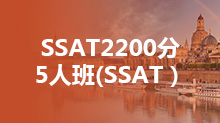
SAT2生物考试专业词汇汇总——M

小编搜集整理了SAT2生物考试专业词汇中以字母M打头的词汇,希望能够帮助大家更好地备考SAT2生物考试。
Mendel, Gregor(孟德尔)
Gregor Mendel (1822–1884) was an Austrian monk and scientist. Through a series of experiments with pea plants, he discovered the basic laws of heredity, including dominance, segregation, and independent assortment.
menstrual cycle(月经周期)
A 28-day hormone sequence that defines the production, ovulation, and menstruation of eggs in the female reproductive system. If fertilization of the egg occurs, the menstrual cycle stops.
Mesophyll(叶肉)
The internal tissue of a leaf between the epidermal cells; specialized for photosynthesis. Contains the palisade and spongy layer.
mitotic spindle(有丝分裂纺锤体)
A complex of microtubules that forms between opposite poles of a cell during mitosis. The mitotic spindle is formed by the centrioles and serves to separate and move chromosomes to opposite ends of the cell for division.
molecular clock(分子钟)
A molecule or gene sequence that has a constant rate of change through accumulation of neutral substitutions and is therefore a good measuring stick for the relatedness of different species.
Monocot(单子叶)
A flowering plant (angiosperm) that possesses one cotyledon during embryonic development. Usually has fibrous roots, flower parts in threes, and parallel veins in leaves.
Monomer(单体)
Each of the repeating units that make up a polymer.
Monosaccharide(单糖)
A carbohydrate monomer. Glucose and fructose are common examples.
Muscle(肌肉)
Structures that create movement in an organism by contracting under a stimulus from a neuron. There are three types of muscle: skeletal, which is responsible for voluntary movement; smooth, which is responsible for involuntary movement; and cardiac, which makes up the heart.
Mutation(变种)
An error in the sequence of nucleotides in DNA or RNA that in turn affects the production of proteins. There are two main types of mutations: substitution mutations and frameshift mutations. A substitution mutation occurs when one nucleotide is replaced by another; these mutations can range from ineffectual to drastic, depending on how the new nucleotide changes the protein coded for. Frameshift mutations occur when a nucleotide is either inserted or deleted into the code; these mutations are always drastic and often fatal, since an insertion or deletion will affect every codon in a particular genetic sequence by throwing the entire three-by-three codon frame out of whack.
myelin sheath(髓鞘)
A structure that speeds the movement of action potentials along the axon of a neuron. The sheath is built of Schwann cells, which wrap themselves around the axon of the neuron, leaving small gaps in between known as the nodes of Ranvier.
Myosin(肌凝蛋白): 一种球蛋白,为肌肉中最多的蛋白质
Protein filaments that, along with actin, allow muscles to contract.
messenger RNA (Mrna/信使RNA)
An RNA molecule that specifies the amino acid sequence of a protein. In transcription, messenger RNA molecules copy the genetic information stored in DNA. The mRNA then bring the recipes for proteins from the nucleus to ribosomes in the cytoplasm.
Malpighian tubules(消化道)
The organ of blood filtration in arthropods.
medulla oblongata(延髓)
Part of the brain responsible for the control of involuntary functions such as breathing, cardiovascular regulation, and swallowing.
Meiosis(减数分裂)
A type of cellular reproduction that results in the formation of four haploid cells from one diploid cell. Contains two cellular divisions, meiosis I and meiosis II, that follow only one round of DNA replication. Meiosis produces germ cells.
Metaphase(中期)
The second stage of mitosis in which microtubules align the chromosomes in the center of the cell along the metaphase plate; the stage of meiosis I and II during which the chromosomes align at the center of the cell.
Minerals(矿物质、无机物)
Inorganic molecules required by the body to carry out life processes. Important minerals are iron, a necessary component of hemoglobin; iodine, which is essential for making thyroid hormone; and calcium, which is required by the bones and for many cellular processes.
Mitochondria(线粒体)
Double membrane-bound organelles that produce most of the energy in eukaryotic cells through the process of aerobic (cellular) respiration, which generates ATP.
Mitosis(有丝分裂)
The phase of the eukaryotic cell cycle in which the cell divides. The four steps of mitosis are prophase, metaphase, anaphase, and telophase.

热门项目
免费预约试听
- 雅思
- 托福
- A-Level
- 留学
- 考研
- KET/PET
- OSSD
- DSE
- TOEFL Junior
- 多领国
- 小语种
- 锦秋国际
- AP
- GRE/GMAT
- SAT/ACT
- PTE
- 腾飞计划
- 其他
热门活动







